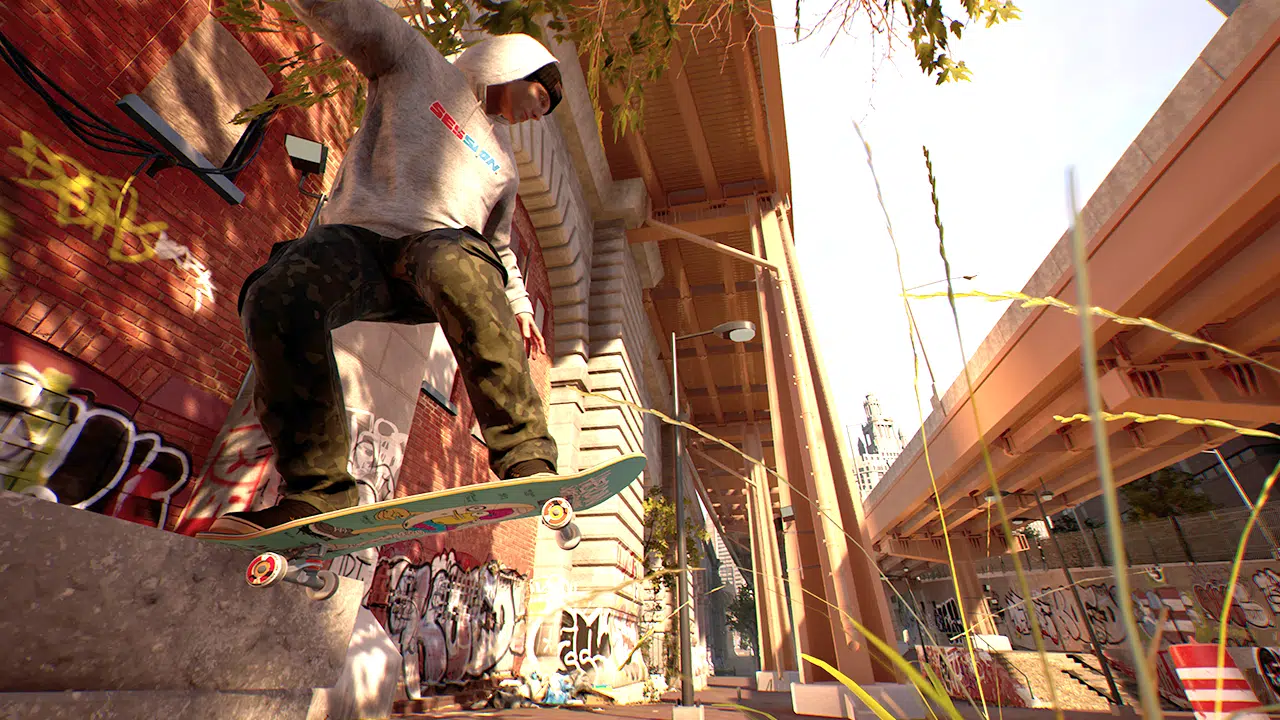The dry spell for skateboarding games seems to be over, with Skater XL releasing a couple of years ago. Now, we have Session: Skate Sim, brought to us by indie developer Crea-ture Studios. Can this latest dual-stick skateboarding sim take the crown as the best skateboarding game yet, or is such a massive undertaking simply too grand for such a small team? Find out in our Session: Skate Sim review.
Flickit, Evolved
EA’s Skate franchise needs almost no introduction. I say almost, because at this point it has been over 12 years since the last entry launched, and as such, many of you may not be familiar with it. Long story short, it revolutionized the skateboarding genre of video games, which was up to that point dominated by Tony Hawk games which had become a bit stale. The “Flickit” control scheme saw players performing tricks with the right stick, with board positioning suddenly mattering. Session takes this to its seemingly logical destination, and now both sticks are used to control the skater’s feet. I remember spending dozens of hours mastering Skate’s then-complex control scheme, but Session may seemingly take many times that with its simulation approach.
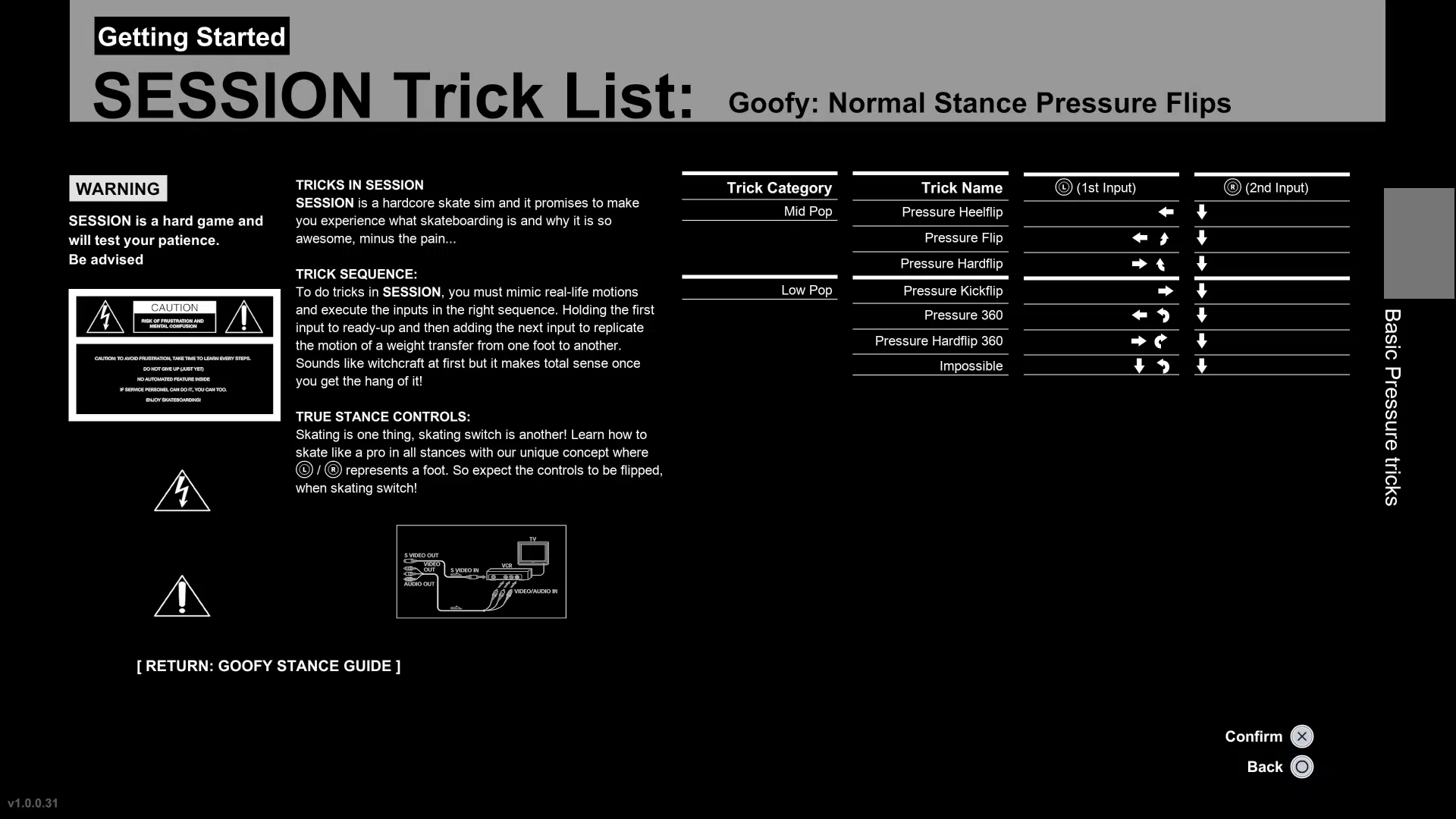
So then, how does it all work? Well, much like in Skate, you’ll use the square and cross buttons to push with your left and right foot, respectively. The analog sticks control the back or front foot, depending on control scheme, stance, and current board direction. See, if you’re skating Switch (meaning your normal back foot is in the front and vice versa), then the analog sticks also switch which foot they control. This can be overwhelming in a game that’s as sim-heavy as Session, and thankfully Crea-ture Studios included an option to have each stick, well, stick to being assigned to the left or right foot no matter the condition.
Something as simple as ollieing requires planning and coordinated movements. You have to move your back foot backwards, then quickly slide up with your front foot. This is a bit like real-life skateboarding, without jumping. Basic flip tricks such as heel/kickflips are done by flicking the front foot stick in various directions, but the fancier tricks like Pop Shuvits, laser flips, hard flips, and more require moving both sticks in sequence, not unlike a fighting game. For instance, a 360 Pop Shuvit requires moving the back foot down, then sweeping it in a circular motion from bottom to top, and at the same time popping your right foot straight up. If done properly, this results in a higher version of the regular 360 Shuvit. That’s a big if, though – these combos, though simple, have tight timing requirements that take a long time and a lot of practice to get just right on a regular basis.
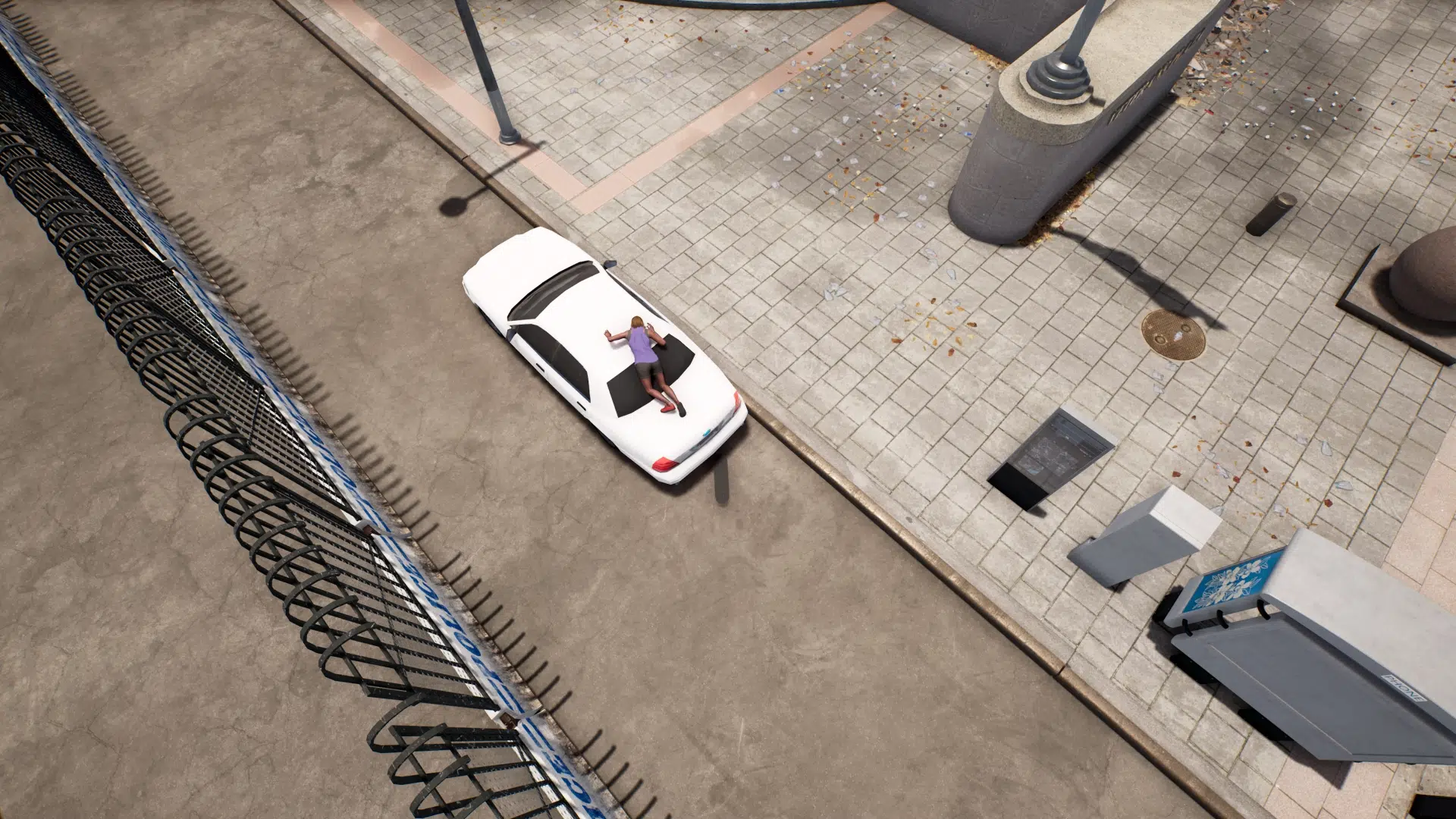
A Love It or Hate It Control Scheme
The biggest shift in controls to get used to in Session is the turning mechanic. The L2 and R2 buttons control this. Using triggers to rotate is such an odd concept at first, but then once you see how the rest of the controls are mapped it makes sense. If you’re coming from, well, any other skateboarding game than Skater XL, it will be quite jarring at first. There will be plenty of times where you go to turn, only to accidentally cause your skater to crouch because you’re controlling a foot and not turning.
Is this a better control scheme? Well, it is certainly more lifelike and allows for a more nuanced trickset. But this may be the trickiest control scheme to learn for any sports game. While Session’s easier modes do help with things like board alignment, the controls remain unchanged no matter the difficulty level. Thus, if you find the controls too difficult to work with, unfortunately your only option is to keep trying. This will no doubt frustrate many casual players, who will probably be better served playing something else.
If the above attitude kind of sounds like a Soulsborne player, that’s because this is essentially a game of that caliber when it comes to difficulty compared to most any other skateboarding game. You are able to set a quick respawn point by holding down on the d-pad, and warping back to it is as simple as holding the up direction briefly. This helps in letting you attempt a line over and over again, which is all but a requirement of most of Session’s quests.
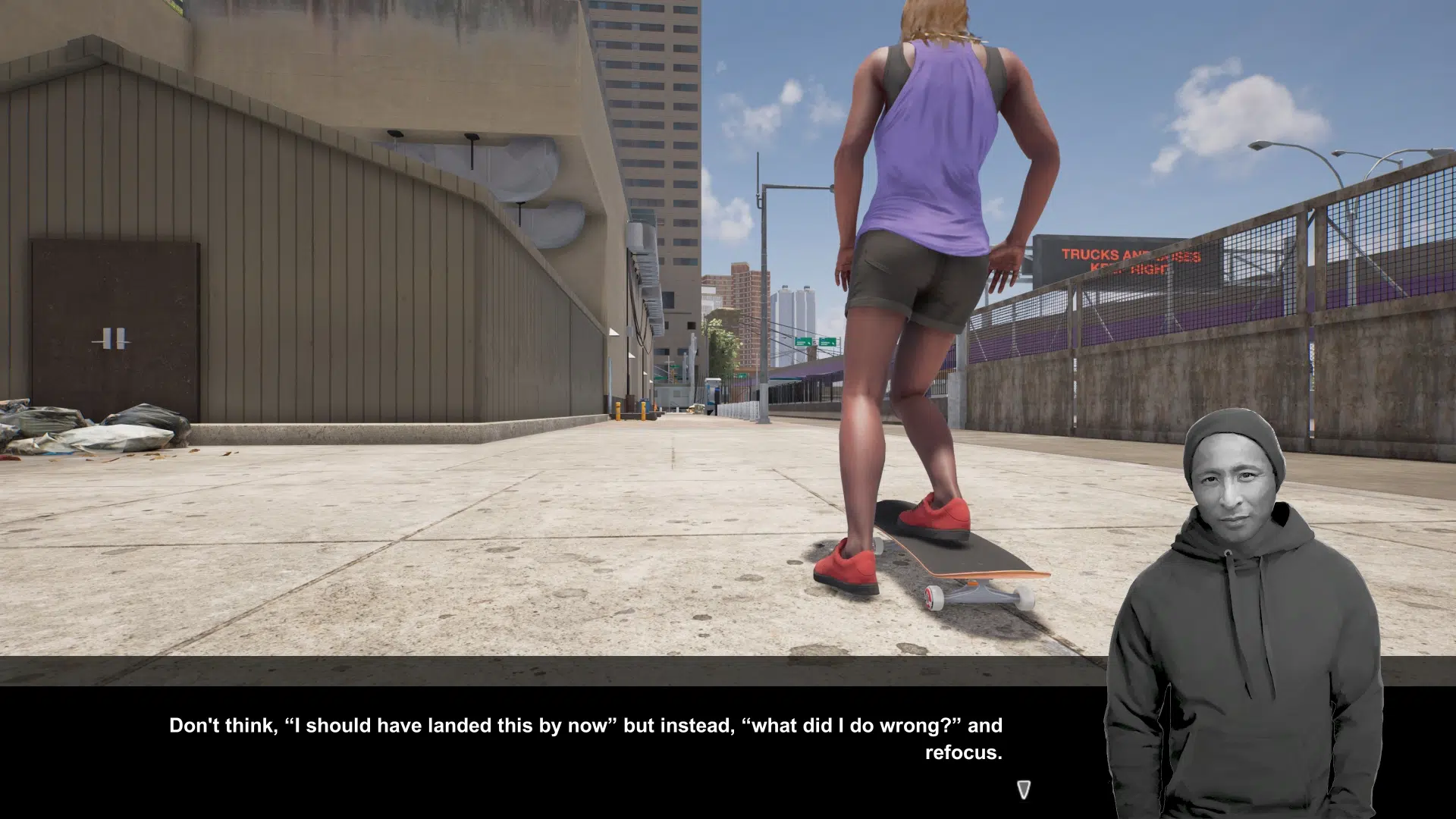
Barebones Missions
Yes, Session does include a basic questing system, where you usually have to go find someone in the city, talk to them, and proceed to perform certain tricks, make a gap, or some other task. It’s a very barebones setup with hardly any help given. A basic checklist appears in the upper-left, and some semi-transparent markings whip along the borders of the quest’s area to show you where you need to perform these tasks. If a certain trick is required, the combo for performing it isn’t shown onscreen – you’re expected to either know how to perform the trick, or to look it up in the menu. This small inclusion would’ve really helped. Some quests require that you’ve earned enough experience points before it will open up. However, you can still begin a quest that you are not qualified for, and it will never progress past the first step of talking to someone, without explanation. This is an annoying issue that wasn’t clear until I searched for why my quest wasn’t progressing.
Beyond the quests you’re given, there isn’t much more to do within the city setting of Session. But that’s sort of the point. When you skateboard in real life, you don’t have any official tasks to take part in. Instead, you set up your own goals, your own lines to figure out, your own challenging set of tricks you want to nail that session. An in-game camera is always rolling, so if you pull off a tricky line or funny fail, you’re able to quickly roll the tape back and record killer footage using various camera angles, keyframes for transitions, speed up or slow down time, and more options.
For some people, not having a formal end goal can feel pointless. They may want to wait and see if EA’s fourth main Skate entry will deliver the goals-based progression seen in earlier versions. But those looking for a good challenge and then being let loose in an ideal city to share some sick footage will feel right at home here. It does seem that while Crea-ture Studios nailed the feeling of skateboarding, they couldn’t quite get the rest of the game to that same level of polish. This is understandable, as smaller teams simply have less manpower to do so. Just know going in that it seems Session will feel more like a tech demo/simulator than a fully realized game.
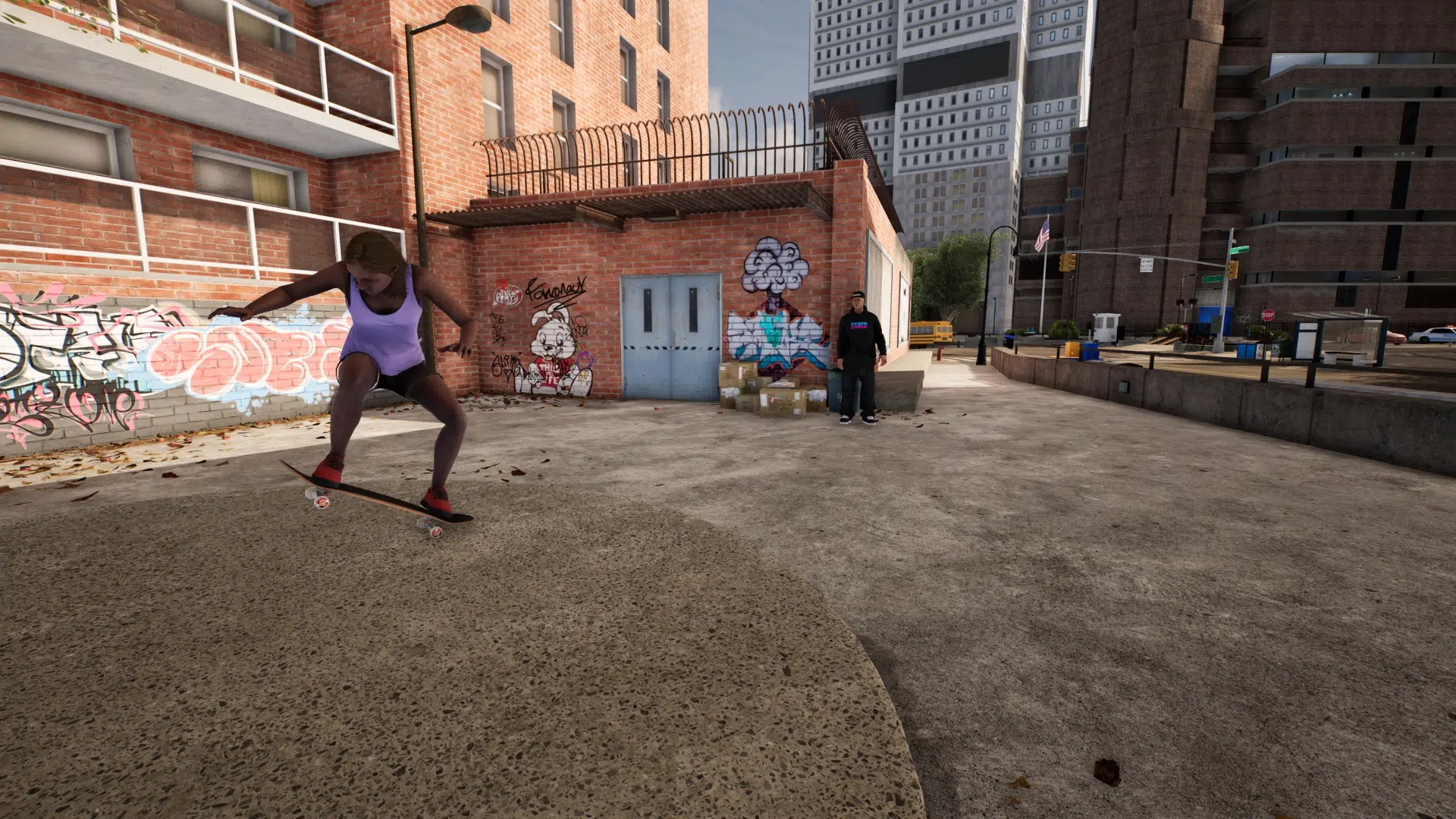
Sim First, Game Second
Taking a look at Session’s menus really hammers that last point home. Listed under the Experimental features are things such as physics-based skater animations, Caspers, Primos, and all lip tricks, along with pedestrian traffic. The default setting lets you loose in the New York, Philadelphia, and San Francisco areas without any other (moving) people to worry about. You can enable pedestrians, who mostly stay out of your way and hilariously become ragdolls if you so much as tap them while off your board. This experimental section also has a lot of tweaks to mess with, such as gravity’s force, your speed while sprinting off the board, and so much more. More choice is a great thing, and it seems Crea-ture Studios isn’t afraid to put some features out there when they aren’t quite ready for primetime.
Session features no real online multiplayer modes – all current multiplayer is done locally. This is quite the omission, though admittedly I didn’t notice its absence until I began writing this review. This feels like the kind of game where you would get completely thrashed in unless you really mastered the game, much like EA’s Skate series. If online multiplayer ever does head Session’s way, be prepared for some stiff competition. Until then, though, your options are very limited.
The Unreal Engine 4 drives Session, and performs very well. With the deserted cityscapes on offer, though, it’d be tough to stress out any game engine running Session. There is a toggle to prefer image quality or higher frame rates, but either choice will run smoothly. The city environment looks realistic, but character models need some work. Thankfully, the stars of the show, the skateboards, are excellently detailed and have numerous customization options, such as deck tape, trucks, side rails, and wheels all interchangeable. Coupled with unlockable clothing for your skater, you can create your ideal setup pretty easily. Session’s soundtrack is also a mix of lo-fi songs, from artists you’ve probably never heard of. A streamer mode disables playing any copyrighted music, and there is also an option to allow for no music to play every so often, so you can take in the sounds of the city. It’s an odd inclusion considering the lack of city life, but perhaps this will be fixed up in time.
Verdict
Session: Skate Sim is the best skateboarding simulator you can play today. It might not be the best skateboarding game, though, with so much focus on getting the feel of the ride just right. The learning curve is such a steep cliff that many more casual skateboarding fans (or especially those without huge chunks of time to dedicate to a game) will likely give up before being confident on these virtual decks. Still, Session: Skate Sim is a challenging simulator worth your time if you’re a hardcore skateboarding fan.
Score: 7/10
Pros:
- A technically solid skateboarding simulator
- Large, freeform levels
- Rewarding but challenging difficulty curve
Cons:
- Perhaps not enough gamification
- Cities feel lifeless
- Difficult control scheme will not appeal to everyone
Session: Skate Sim review code provided by publisher. You can read MP1st’s review and scoring policy right here.
